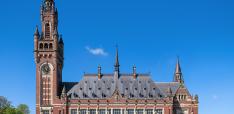Mutual Stakes: Economic Interdependence Between Southeast Europe and the EU

Eduard Vasilj contends that integrating Southeast Europe into the EU Single Market is as vital for regional stability as military and security frameworks.
Incorporating the Western Balkans, Romania, and Bulgaria into Europe’s future would enhances resilience against external influence and help mitigate risks associated with outward migration. Southeast Europe -comprising the Western Balkans, Romania, and Bulgaria - is home to about 34.5 million people and constitutes a substantial economic bloc yet has not achieved full integration into the EU economy. Advancements in resource development, infrastructure investment, and job creation could serve as a second pillar of regional resilience, complementing security measures.
The region possesses strategic mineral resources critical for Europe’s energy transition and high-tech industries, including the defence sector. Serbia’s Jadar lithium project contains about 136 million tonnes of ore with 1.8% lithium oxide, producing around 58,000 tonnes of lithium annually -enough for roughly 1.1 million electric cars. Serbia’s copper production is about 43,000 tonnes per year. Bosnia and Herzegovina holds zinc and lead reserves estimated at 56 million tonnes, with annual copper production of 30,000 tonnes. Albania’s Devolli nickel mine contains 35.6 million tonnes of ore at 1.2% nickel, equating to about 427,000 tonnes of nickel metal, and chromite reserves exceed 1.2 million tonnes. Montenegro’s copper and aluminium exports totalled roughly EUR 75 million in 2020, with ongoing exploration for nickel and bauxite. Romania’s mining sector includes rare earths, copper, and gold, with copper production around 19,000 tonnes annually and gold production about 200 tonnes. Bulgaria’s estimated reserves of rare earth oxides reach 30,000 tonnes.
Leveraging Southeast Europe’s natural and agricultural resources strengthens EU supply chains, reduces reliance on non-European actors, and enhances industrial security. Romania and Bulgaria, in particular, offer significant agricultural potential. Romania is home to Europe’s largest arable farm, Agricost Braila, which spans nearly 56,000 hectares on the Insula Mare a Brăilei. This area is leased by the UAE-based Al Dahra Group, highlighting the region’s agricultural value. Renewable energy is also a major focus: the UAE’s Masdar Group has renewed and co-owns the Krnovo Wind Farm in Montenegro (49 percent stake, 72 MW), which supplies electricity to around 45,000 households and avoids approximately 80,000 tons of CO₂ emissions annually.
Chinese investors are also expanding their footprint. The China Three Gorges Corporation acquired Alcazar Energy Partners from the UAE. The company is developing the Celzijus I project in Serbia, a 200 MW onshore wind farm east of Belgrade. It is part of a broader pipeline of wind and solar projects in the country with a combined capacity of around 768 MW.
Furthermore, Chinese companies have signed an agreement with Serbia for €2 billion in renewable energy investments, including a 1.5 GW wind farm, a 500 MW solar plant, and a hydrogen production facility with an annual capacity of 30,000 tons by 2028. The energy produced is primarily intended for Serbia Zijin Copper, the local subsidiary of Zijin Mining.
Strategic Adriatic ports, including Rijeka, Durrës, and Bar (central to bulk cargo and energy imports), have emerged as crucial economic nodes, linking Southeast Europe to European trade networks, supporting employment, and reducing dependence on alternative actors.
The EU membership of Romania and Bulgaria provides a stabilizing anchor for regional integration, demonstrating how economic integration complements security frameworks. Since accession, Romania has doubled its GDP, while Bulgaria has diversified its energy imports, reducing reliance on Russian gas. At the same time, Russian attempts to influence elections in Romania highlight the ongoing geopolitical stakes. Together, these EU states serve as a stabilizing bridge to the Western Balkans, showing the tangible benefits of embedding Southeast Europe economically within Europe’s structures.
Brain drain remains a pressing challenge, with Bulgaria losing nearly 20 percent of its population since 1990, Albania over 1.7 million people, and Bosnia and Herzegovina more than 10 percent. Economic opportunities through industrial development, ports, and employment incentives are critical to retain talent and stabilize societies. Persistent disparities in GDP per capita and purchasing power, with averages in the Western Balkans between EUR 6,000 and 9,000 compared to the EU average of about EUR 36,000, underline the urgency of economic integration. Yet, persistent governance challenges, weak rule of law, and political volatility in parts of the Western Balkans create hurdles to full market integration. A sustainable path to convergence requires both reform commitments in the region and strategic investment prioritization within the EU.
Two central arguments emerge: first, economic integration is indispensable for political stability and resilience against external influence. Second, the region’s strategic resources, infrastructure, and industrial potential make Southeast Europe a vital partner and market for the European Union. Treating economic development with the same urgency as military and security measures ensures peace, prosperity, and long-term stability in Southeast Europe.
Eduard Vasilj holds degrees in Political Science and International Law from the Goethe University of Frankfurt and in Political Science and Organisation from the University of Zagreb. Following his advisory work for governments, he transitioned into the private sector, serving for almost 20 years in executive positions in multinational companies across the German-speaking region and Southeast Europe. He advises governments and corporations on geopolitical risk and geoeconomic issues with a particular focus on East and Southeast Europe.
Photo by Diva Plavalaguna


